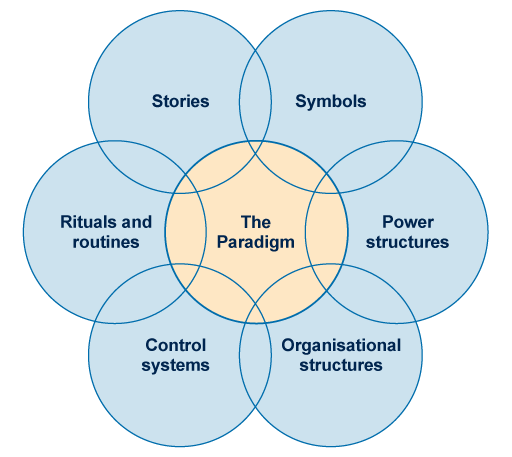8 Sustaining change
The final phase of change initiatives requires a period of stability to reinforce new behaviours and to realise (and celebrate) the benefits of the change.
Reinforcement helps make the change sustainable over the long term. Once the change is embedded into the cultural web of the organisation as ‘the way we do things around here’, then the change can be said to be truly sustainable. The cultural web was developed by Johnson (1992) and cited in Senior, Swailes and Carnall (2020) to explain the different dimensions of an organisation’s culture.
As you can see from the figure above, it includes:
- the routine ways that members of the organisation behave towards each other
- the rituals of organisational life
- the stories told by members of the organisation to each other, new recruits and outsiders
- the symbolic aspects of the organisation, such as logos, furnishings, titles, status differentials
- the control systems, what gets measured
- the power structures
- the formal organisational structure.
Activity 11 Reinforcing change
Read the article ‘Reinforcing change: all your questions answered’ [Tip: hold Ctrl and click a link to open it in a new tab. (Hide tip)] (WalkMe, 2019) on The Change Management Blog.
Then think about how you can reinforce change and the approaches you might take.
Managing change is an iterative and ongoing process, as change initiatives are implemented and sustained. In the next section we explore a selection of change frameworks that can help structure your change programme.

